There are some guitar accessories that can help you shave years off of your development time, remove a lot of frustration and make your life a little bit easier. I know that sounds like a big claim, but as a guitar teacher I see all the time the impact certain accessories have on students.
If you’re just getting started learning guitar, or you’re looking for gift ideas for a guitarist, these accessories are must-haves for any beginner.
Guitar Tuner
You probably guessed this one would be here! If you don’t already have a guitar tuner, this is the most important guitar accessory to buy. I know this is a boring accessory, but it’s hard to emphasize to a beginner the importance of being perfectly in tune.
The quick explanation is that as you learn guitar, your ears are learning as well and need to hear an in-tune guitar. Your ears are trying to figure out what sounds good and what doesn’t. A lot of frustration beginners experience is simply due to being out of tune and not realizing it.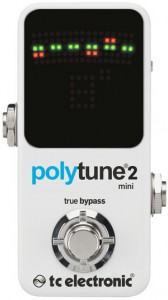
The worst situation I’ve seen is when a beginner learns on an out of tune guitar and their ears learn to accept that out-of-tune sound as normal. Then when they try to play in a band they can’t understand why they suddenly sound horrible. They then blame the other guitarist or blame their guitar and buy a new one only to have the same problem. Learning on an out-of-tune guitar can really screw up your sense of pitch.
If you own an electric guitar, I recommend buying a guitar tuner pedal such as the PolyTune 2 Mini by TC Electronic (read my review here). The advantage this tuner has over other tuners is that you can strum all six strings and instantly see which strings are out of tune.
The chances are if you buy a modern guitar amp that it will have an inbuilt guitar tuner. I still recommend buying a dedicated pedal for several reasons. The most useful reason is that it gives you a quick and easy way to mute your guitar which comes in very handy if you want to perform in the future.
If you own an acoustic guitar, a clip-on tuner is your best option such as the PolyTune Clip by TC Electronic. It’s essentially the same as the pedal above, only you can clip it on to your guitar. Of course, you can use it on an electric guitar as well.
There are cheaper tuners available, but buying a potentially inaccurate guitar tuner isn’t worth it. Get a good one that will last.
The bottom line is that playing in tune is crucial to your development as a guitarist. A good quality guitar tuner helps your ears develop and removes frustration from playing out of tune.
Guitar Maintenance Kit
Buying a guitar is a big investment and you need to take care of your guitar if you want it to perform well into the future. Over the years it has become clear to me that students who take care of their guitars develop faster. I don’t know why, but my guess is that if you take your guitar seriously, you’ll take your playing seriously as well.
There are guitar toolkits you can buy such as the Ernie Ball Musician’s Tool Kit which contains most of what you’ll need to keep your guitar in good shape. I recommend buying a kit so you can keep everything together in a carry bag.
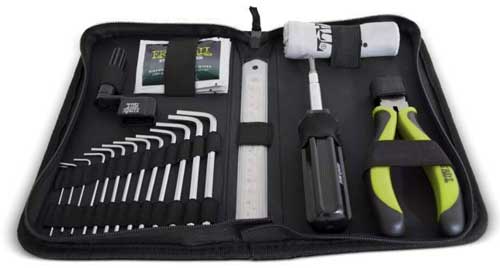
Kits like the one above usually contain the following tools:
- Wire cutters – makes it easier for you to change strings without damaging your guitar
- Microfiber cloth – keep your guitar clean and polished
- Peg winder – takes the pain out of winding new strings tight
- Screwdriver & hex wrench set – useful for adjusting intonation and action
In addition to the above tools, I also recommend buying cleaning products to keep your fretboard clean. Over time your fretboard will build up grime and gunk around the frets. Giving your fretboard a good clean every time you change strings is a good habit to get into. Cleaning your strings will extend their life, so it’s worth having a string cleaner and cloth handy to wipe your strings down regularly. The oil in your fingers will corrode the strings which degrades your tone. It only takes a few seconds to wipe your strings after every practice session and it makes a big difference to your tone.
A kit like the Dunlop 6504 contains everything you need to keep your guitar clean. Again, this is a boring accessory to buy, but it can make a big difference to how your guitar feels and looks which will affect how you feel when you play it.
Capo
At some point, you’re probably going to need a capo. Some songs can only be played with a capo, while a capo makes other songs easier to play. A capo is basically a clamp you place on your guitar that allows you to play chords and songs higher up the neck. You will see countless acoustic guitarists use capos, but even if you don’t play the type of music that typically uses a capo, it’s still a useful tool to have.
The reason I feel a capo is a must have for beginners is because it can make chords dramatically easier to play when you’re getting started. This is especially true for children or people with small hands.
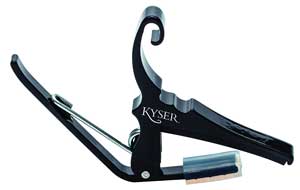
By placing a capo somewhere on the neck, you can basically move all the open chords you learn into a higher position. You may have noticed that the higher up the neck you move, the closer the frets are. This means that it’s far less of a stretch to play a chord high up on the guitar compared to the open position.
If you experience pain in your hand when you try to play open chords, playing the same chords with a capo higher up the neck can completely remove that pain and make it easier on your fingers. You won’t need to push down as hard or stretch as far.
This means a capo allows you to ease into playing chords. You can start in a high position and work your way down the fretboard until you can comfortably play all chords in the open position. This is a use for a capo a lot of guitar teachers don’t consider, so keep this in mind when you practice.
Find out more about guitar capos including popular models, songs using a capo, and more in this guide: Ultimate Guide to Guitar Capos.
Metronome/Drum Machine
Out of all the guitar accessories I’ve covered in this guide, a metronome will have the greatest impact on your playing. A metronome can literally take years off of your development time and can strengthen your rhythm skills in ways that isn’t possible without one.
The best metronomes you will find available aren’t hardware metronomes. The best versions are apps you can download for iPhone, iPad and Android devices. These apps have a far greater range of features, flexibility and precision over any hardware metronome you will find. Most apps will allow you to set different time signatures, rhythm patterns, accents and different sounds.
You can even take it further and get a programmable drum machine app such as the DM1 on iOS. The advantage a drum machine has over a metronome is that you can set it to play back a specific rhythm you want to work on. So if you have a chord progression with a pattern you’re struggling to master, simply enter that rhythm in the app and you can practice it at any tempo you want. Or if you want to practice a section of a song, you can enter the drum beat (if you can figure it out) into the app to play along with.
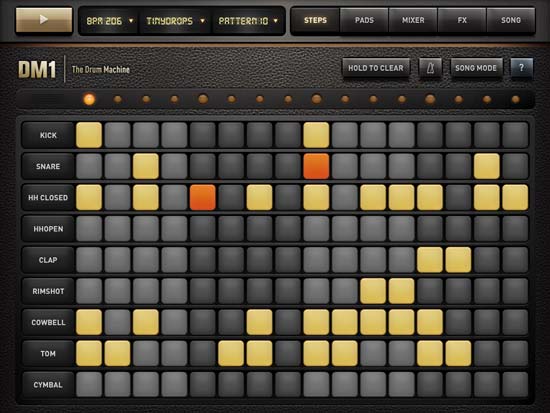
If you’re hesitating with my recommendation of getting a metronome because it sounds boring, get a drum machine. It will give you the same benefits but will sound more ‘musical’.
If you don’t have a smartphone or tablet or for some reason want a physical metronome, there are options available. Just remember that you’re going to be missing out and paying a lot more than you should. If you buy a physical metronome, buy a digital one. Don’t buy an analog one with the swinging pendulum. Even though they will be labeled as ‘highly accurate’, a digital metronome will always be more accurate as you can set the exact tempo.
The best physical metronome I could find at a decent price is the DB-30C Dr Beat Metronome by BOSS. It gives you a good range of features and control. It’s also a dedicated metronome so you won’t have to worry about it doing a poor job of two things (like most tuner/metronome combos).
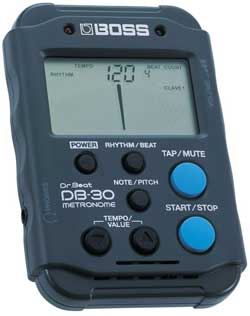
Alternatively, if you play an electric guitar you can take things in a different direction. There is now a great drum machine guitar pedal available called the BeatBuddy by Singular Sound. In addition to typical drum machine features you can actually create and load full songs onto the pedal using their software.
A metronome/drum machine will give your rhythm and development a massive boost, so make sure you get a good one and use it.
Other Guitar Accessories to Consider
The above guitar accessories are all must have for all beginners. All beginners need a metronome or guitar tuner regardless of whether you learn on acoustic or electric. There are other guitar accessories which are good to have, but depend on your situation.
I’ll list a few optional guitar accessories to consider below and explain who should consider them and why.
Humidifier
If you own an acoustic guitar, it’s really important to consider a humidifier. There are various types from guitar humidifiers where you place in your guitar’s soundhole or case to room humidifiers that take care of the entire room. The right option for you depends on where you place your guitar, where you live and how many acoustic guitars you own.
I’ll need to revisit this topic in a guide, so for now I recommend checking out the Music Nomad Humitar.
Slides
If you want to learn blues then a guitar slide is a must have, but for everybody else, they’re a fun little accessory to play around with. Playing with a slide is also a great way to develop your sense of pitch.
There are two main types of slides you can buy: glass or metal. Metal slides can be steel or brass which also contributes to tone. As you can imagine, there is quite a difference in tone between a glass slide and metal slide.
A slide is similar to a capo in that you may use it occasionally, or you may use it all the time. It really depends on what you enjoy playing on guitar. Give one a go and see what you think of it.
Find out how to use a guitar slide in this lesson. The lesson includes helpful exercises to get you used to a guitar slide and how to use proper slide technique.
Guitar stand
There’s a good reason why you should have your guitar on a stand – you’re far more likely to pick the guitar up and practice when you have it on an easily accessible stand. As a guitar teacher I can tell you that students who place their guitar on a stand practice significantly more than students who keep it in a case or bag. It’s night and day. If you want to become a great guitarist, buy a stand and place it somewhere in arm’s reach of where you spend most of your time (eg: next to a couch or computer desk).
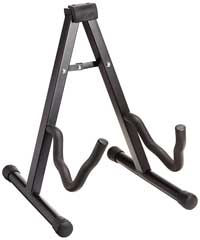
I recommend a stand like the one above because it’s so compact and sturdy. You can easily take it with you to band practice or gigs compared to other awkward shaped stands.
E-Bow
This final accessory is just for fun. You probably won’t have much use for it depending on what style of music you play, but it’s a great way to experiment with new ideas and come up with interesting sounds.
If you want infinite sustain, then the EBow is a cheat way of getting it without cranking your amp up to earsplitting levels. You simply hold the E-bow over your string and it will vibrate your string continuously.

You definitely don’t need this accessory, but seeing as most of the other accessories are pretty boring (but useful!), I had to give you at least one interesting one!
There are plenty of other guitar accessories out there which you may or may not find helpful. Once you have the essentials, the type of guitar accessories you’ll find useful depends on what your career path as a guitarist.
Check out more accessories and gift ideas here. If you’re learning electric guitar, check out some must have guitar pedals here.
